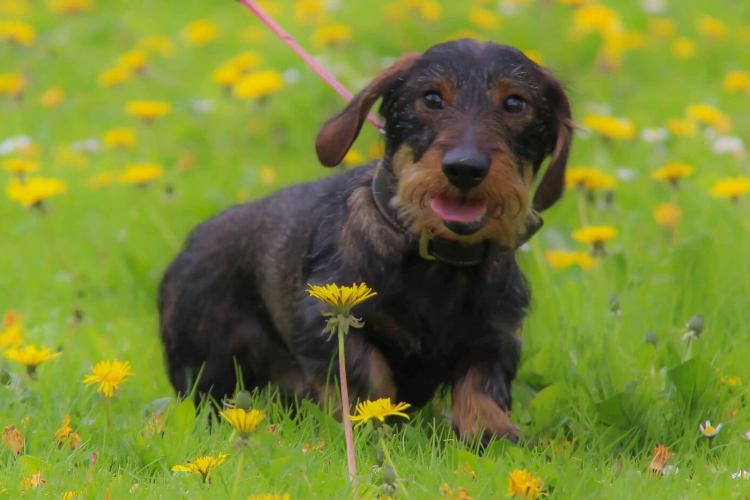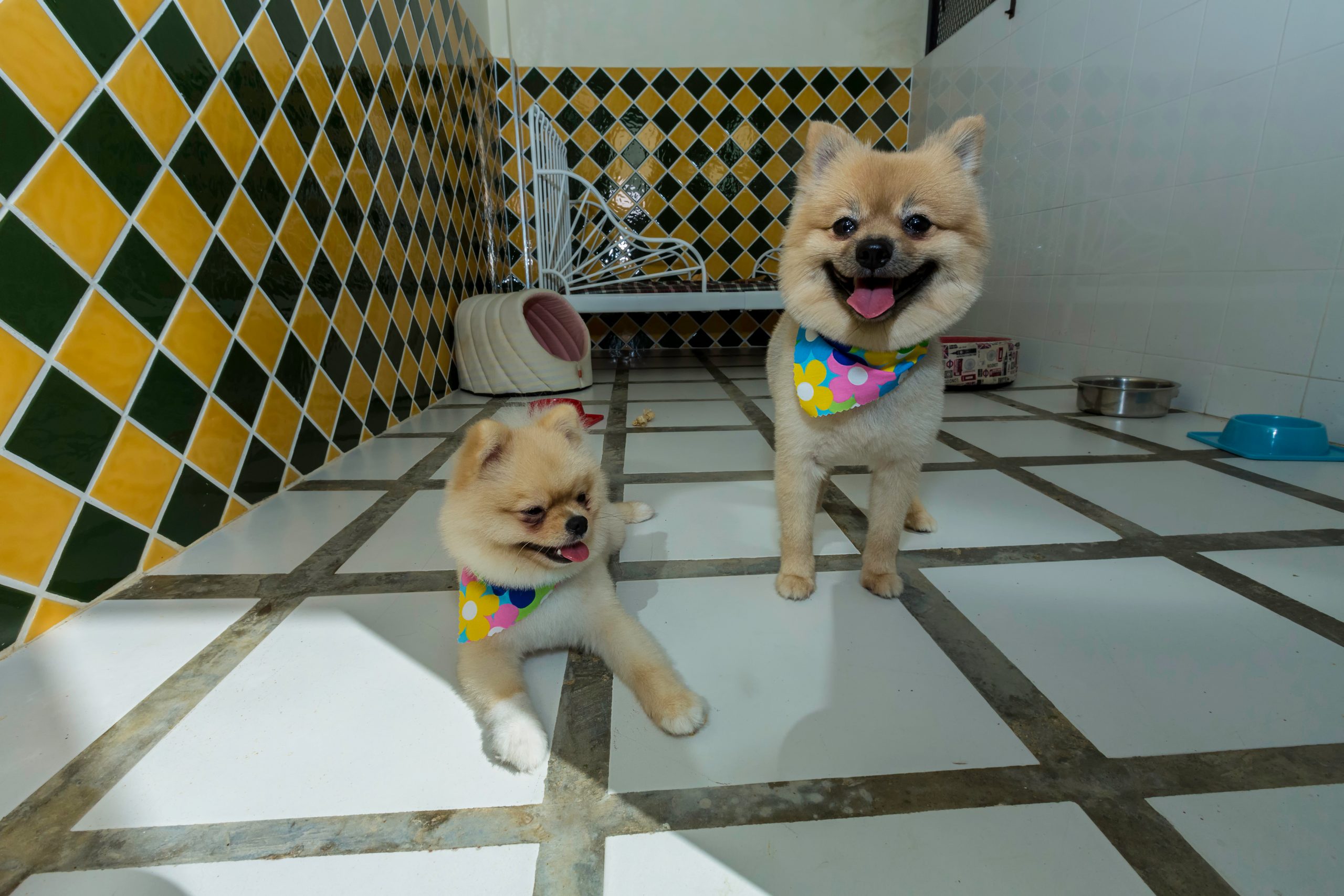This page contains affiliate links. This means that we may get a small commission for recommending products, if you choose to click on something and buy it. This does not cost you anything, but we wanted to be honest and let you know!
(Last Updated On: 6th August 2022)Walking a dog is not only good exercise but its great for bonding with your dog. From puppyhood to old age, every dog enjoys to get out of the house and walk around, smell the smells, and see the sights.
However, your dog will need to learn how to behave on a leash before it is able to explore. Dogs, and puppies especially, often like to do things to please their owner, but walking is an area where your dog will require a little more training work than other commands.
If you walk your dog regularly, you will know that it is very rare to see a dog being well behaved on a leash. The majority of dogs love to run around as soon as they leave the door and they like to have a “territory” that is much larger than your house. Not only this, but dogs also like to chase things that run or run at them, which can cause them to jump or attack.
Table of Contents
Process of Walking Yor DOg
The process of walking your dog is frustrating at best time but the occurrence of adults walking the fully grown dogs that they can’t control is on the up. You can see them getting pulled along the pavement or dragged to the side of the dog notices something in particular.
If the dog carries on with this mentality, it will be harder to cut out later on in life but not impossible. Therefore, the best time to train your dog on a leash is when a dog is still a puppy because he is still finding ways to make you happy and will be more open to doing things your way.
It is best to find a collar or dog harness that fits your puppy comfortably and a leash that stretches far to begin training right away.
If he can learn it when he is still a puppy, it will become natural to him into adulthood. Harnesses can be bought in all different colors and are great for greater control of your dog in case they pull or go for another dog.
Dog Walking Devices
There are many different dog walking devices, from cloth collars to choke collars, to spike or prong collars, but easily the most effective is the harness. A harness clips in front of and behind the legs and its design means that instead of choking your dog when he pulls, which can harm him; it instead just restricts his movement.
If you dog current state of training involves a lot of movement or jumping around when approaching another dog, then there are some dog harness design that is able to restrict movement until pressure is released. This works by locking up the dog’s underarms, which won’t cause any pain to the dog, and professionals to feel that is far more effective than punishment during training.
It is vital that you understand you and your dog will have to learn to walk as a team and everyone is different when it comes down to walking their dog. Every dog will respond differently to different people walking them, therefore you will need to train your dog in the way you feel is correct and that the dog enjoys.
A great place to start is in an open field or park that isn’t too busy and allows the dog to roam on a long leash. If you can see that the dog is starting to pull or head towards a different direction, instead of pulling him back hard on the lead, you should just stop suddenly. The dog will eventually start to understand that you do not like him pulling on the lead.
Why You Should Walk Your Dog
It is essential that your dog is exposed to exercise every day and this includes the smallest breeds to get their little legs moving around. However, if you have a larger dog, these breeds will require additional exercise and before you decide to take the dive to own one, it is important that you review whether you can give the dog the exercise it requires.
You may be lucky enough to have access to a large fenced field/land that your dog can run around in but it is still important to take your dog on a walk regularly as there are several other benefits from a proper dog walk.
Walking your dog regularly will build and strengthen the bond between you and your dog. You can tell by the excited behavior when you mention the word “walkies” that your dog is genuinely pleased and grateful to be going on a walk. Work together and the dog walk can carry on being enjoyable and stress-free.
Train Your Dog Whilst Walking
The time during walking is an ideal to accomplish a number of obedience training tasks and show that you are the pack leader. You will also have the opportunity to teach basic commands such as “come”, “sit”, “fetch” and of course whistle. This will allow your dog to learn whilst on a walk, which is far easier and enjoyable for both than being in your house.
Get Your Dog Used To The Lead
All dogs need to be controllable whilst on a walk and therefore all dogs should be trained to behave while on a lead or leash. This is vital training even if you live in an area where your dog can run free most of the time.
There will come the day when your dog needs to visit a vet or you need to take your dog to the town and if it will not behave well on a lead, you will have problems. By being away from its home territory, a dog is forced to learn some social skills around other people and other dogs.
This is an important factor in preventing excessive aggression in your dog later on. If you are trying to talk to someone but your dog is being rowdy on the lead, it can be quite embarrassing, therefore early practice is vital. If your dog is used to roaming around without a lead, a long lead with 16 foot in length would be a great start to getting used to a lead.
Avoid Dog Depression
Dogs that are stuck indoors or do not get a change in the environment can become very depressed, which is heartbreaking. A depressed dog can then evolve into an anxious dog, which can lead to odd behavior such as being scared of its own shadow, aggressive to other dogs, and bad habits.
You can help resolve dog depression with regular walks that are a complete change of an environment and will enlighten your dog’s life and of course improve the dog’s health and fitness.
Ian is an avid outdoorsman and dog lover. He lives in Central Florida with his wife Heather, and their 2 dogs – Panda (Purebread Rough Collie X English Golden Retriever) & Kuma (Blue Merl Purebread Rough Collie)




